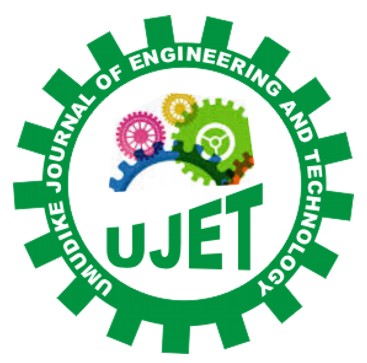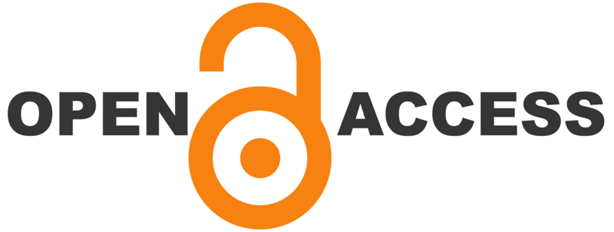Digital Preservation Policy
The Umudike Journal of Engineering and Technology (UJET) Libraries Digital Preservation Policy
outlines the plan to support sustainable preservation of and access to the digital scholarly record
of the Journal for the foreseeable future.
Introduction
The Umudike Journal of Engineering and Technology (UJET) Libraries Digital Preservation Policy outlines
the plan to support sustainable preservation of and access to the digital scholarly record of the
University for the foreseeable future. The policy will be subject to change as new capabilities,
standards, best practices and technologies evolve, and as such will be regularly reviewed, revised, and
updated as needs arise.
Digital preservation is the series of managed activities necessary to extend the usable life of computer
and electronic files and to protect them from media failure, physical loss, and obsolescence. Digital
preservation can be divided into two categories of activity: those that simply maintain the authentic
original bit stream, and further activities (like normalization, migration, and emulation) that provide
access while maintaining the essential functionality of the original digital object. Both categories will
be applied to digital materials preserved by the Umudike Journal of Engineering and Technology (UJET)
Libraries.
Mandate
The Umudike Journal of Engineering and Technology (UJET) Libraries’ mandate for the preservation of digital
materials is predicated on our explicit institutional missions at the National Libraries, International
Repositories and the UJET level:
UJET Board of Editors Policy: “The primary mission of the Umudike Journal of Engineering and
Technology (UJET) is the preservation, advancement, and dissemination of knowledge.”
UJET Libraries Delivering Success, Strategic Plan, Collections and Access: “The Libraries act as
stewards of the scholarly record by developing and preserving our local collection, and provide access to
the hidden treasures within it to the University, the region, and the world.”
UJET Libraries Delivering Success, Strategic Plan, Research and Scholarship: “The Libraries advance
research, scholarship and technical care through the creation, dissemination, transformation, preservation,
and exchange of new and existing knowledge in partnership with scholars and researchers.”
Principles
The primary purpose of the Umudike Journal of Engineering and Technology (UJET) Libraries’ preservation
program is to ensure long term access to the variety of information resources published and selected for
the Libraries’ collection. The core aim of digital preservation is to maintain that access to digital
materials across time, platforms, and technology. Digital preservation at the UJET Libraries and national
Libraries relies on the following principles as the basis for all decision-making.
Standards-Based: Comply with the Open Archival Information System (OAIS) reference model standard
and conform to certification requirements for ISO Standard 16363 for Trusted Digital Repositories.
High Quality Metadata: Capture and maintain high quality and useful descriptive, administrative,
technical, and preservation metadata for all preserved digital content.
Technically Robust: Commit to an interoperable, reliable, and scalable digital archive focusing on
open source technologies. We maintain hardware, software, and storage media containing digital content in
keeping with prevailing best practices, including adherence to environmental standards, quality control
specifications, and security requirements. We have adequate, secure, and geographically diverse backup and
disaster recovery safeguards, as well as diversity in storage media and management methods.
Authentic: Maintain local procedures to meet archival requirements pertaining to provenance, chain
of custody, authenticity, and integrity of content.
Community-Minded and Collaborative: Adhere to prevailing community standards for preserving access
to digital content of long-term value and contribute back to that community when possible. Participate in
consortia and collaborative digital preservation solutions when they are a good use of Libraries resources.
Legally compliant: Comply with intellectual property, regulatory, copyright, privacy, and ownership
rights for preservation of and access to all digital content.
Up-to-Date: Document and regularly update policies, procedures, and practices in a transparent and
consistent fashion. We commit to on-going training and education, and share that knowledge with the Libraries
and the campus community.
Sustainable: Adopt a sustainability plan that ensures the cost-effective, transparent, and auditable
management of the digital corpus over time.
Scope
Digital resources published and collected by the UJET and preserved in national libraries and repositories
fall into these general categories:
- Peer reviewed property materials
- Licensed resources
- UJET scholarly content
- Electronic Theses and Dissertations and accompanying materials
- Archival material
- UJET Libraries-owned, managed or produced digital resources, and are preserved as content sources
Preservation Strategies
Regardless of format, preservation actions are generally prioritized on the three categories of use, risk,
and value. The specific preservation actions used for Umudike Journal of Engineering and Technology (UJET)
Libraries’ digital resources will also depend largely on the source and type of content, as well as
existing technology and expertise. These decisions will also reflect the priorities of associated applicable
publication and collection development policies.
The ability to preserve digital materials will be necessarily scaled to the level of committed institutional
support. The scope of preservation actions beyond maintaining persistent access to an authentic bit stream will
be considered with an aim towards careful, pragmatic evaluation of current demand and future utility, considering
the constellation of preservation actions available at the time, including but not limited to normalization,
software migration, and emulation.
No preservation steps will be taken for materials created for short-term use, such as materials scanned for e-reserve
and document delivery. While the Digital Preservation repositories are not generally access points (with some exceptions),
all materials opted for preservation should be cataloged and intended to be available for use.
Digital assets are subject to periodic reappraisal and may be considered for deaccession. Any deaccessioning in
the preservation repository will be guided by the disposition of access copies, and will be carried out in a transparent
and well-documented fashion, taking care to avoid any procedures that contradict the Libraries’ reputation for responsible
stewardship.
Challenges
In designing and implementing a digital preservation program, our main challenges are that of sustainability and scalability.
Preservation is an ongoing process that requires the dedication of time, expertise, and financial resources over many years.
Digital materials are particularly susceptible to the risks of media failure, physical loss, and obsolescence. The longer
preservation is neglected, the more costly and difficult interventions become, with less successful outcomes. Currently, the
Libraries are rarely able to provide more than bit-level preservation for any content type or source, while growth in both
size and complexity of the corpus of materials in need of preservation is inevitable. Bit-level preservation makes no provision
to ensure files are usable when their format is no longer current. As growth occurs, additional resources will be required to
fully support long term access to files in obsolete formats.
Roles and Responsibilities
Preservation of any format requires a community of collaborative partners in order to be successful, and is an ongoing
cycle of actions and decisions, not a single event. Libraries, archives, crossref and their staff are traditionally responsible
for preserving and providing access to the scholarly record, and this does not change as formats become more predominantly digital.
In order to achieve success, responsibility for the preservation of digital materials requires the participation of preservation
librarians, subject librarians, curators, archivists, libraries staff, repository librarians, digitization project managers,
libraries IT, libraries administration and UJET administration.


